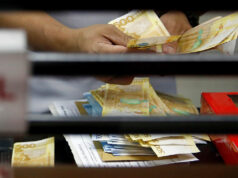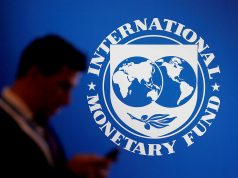Fitch sees 2nd half GDP growth picking up ‘modestly’
AFTER a not-so-stellar 5.5% first-half economic expansion amid budget delays and headwinds from abroad, Fitch Ratings expects Philippine growth to catch up with a modest improvement this semester.
In its APAC Sovereign Credit Overview report for the third quarter, the global debt watcher — which has a “BBB” sovereign rating for the country, a notch above minimum investment grade, with a stable outlook — said it expects gross domestic product (GDP) “growth to improve modestly” in the second half and was “maintaining its full-year 2019 growth forecast of 6.1%…”
“At a growth rate of 6.1% for 2019, we think the Philippines would still remain among the fastest-growing economies in Asia-Pacific,” Sagarika Chandra, associate director for Asia Pacific Sovereigns at Fitch, said via e-mail.
Philippine GDP growth slowed to 6.2% last year from 6.7% in 2017.
“Continued strong growth while maintaining macroeconomic stability could trigger a positive rating action,” Ms. Chandra said.
Weak global growth amid an escalating Sino-US trade war could weigh on overall Philippine economic expansion, which could clock in at 6.3% in 2020 and 2021.
Fitch noted that the Bangko Sentral ng Pilipinas’ (BSP) move to raise benchmark interest rates by a total of 175 basis points in 2018, paired with slowing growth, have lowered overheating risks. The BSP has partially dialed back last year’s tightening amid currently easing inflation by reducing key rates by a total of 50 bps so far, and has signalled another 25 bp cut towards yearend. “Inflation has generally been on a declining trend in 2019 so far and for the first eight months average inflation is within the central bank’s target range. We think this, along with weaker growth in the first half of 2019, offers some room for monetary easing,” Ms. Chandra said.
On the other hand, the report forecasts the country’s current account to remain in deficit at about 2.4% of GDP in 2019, no thanks to weak export performance, as exports contracted by about 0.5% in the first half of the year versus the 1.1% growth in the same period last year. Imports fell in the first half of the year as well, “although this was due mainly to the delay in passing the 2019 budget which affected spending on infrastructure,” Fitch noted in its report.
“We expect imports to rise somewhat in the second half with the passing of the budget. The agency expects subdued export performance and generally strong import growth in 2020 and 2021 to keep the current account in a deficit of between 2.5-2.6% of GDP.”
Fitch also called for further improvement in revenue generation. “Better governance standards could bode well for the business environment and support higher investment levels over time. We think progress made on tax reforms so far and our expectation of further reforms, would lead to a gradual increase in central government revenues,” Ms. Chandra said. “We are expecting central government revenues to increase to about 16.9% of GDP by 2021 from 16.4% of GDP in 2018. As such we expect the budget deficit to stabilize at around three percent of GDP in 2020 and 2021, as higher spending on infrastructure is offset by the improvement in revenues.”
Ms. Chandra said tax reforms will “support a gradual improvement in central government revenues and keep budget deficits within manageable levels,” cautioning that “significant widening of budget deficits, steady increase in inflation alongside wider current account deficits signal an increase in macro instability.” — Luz Wendy T. Noble



